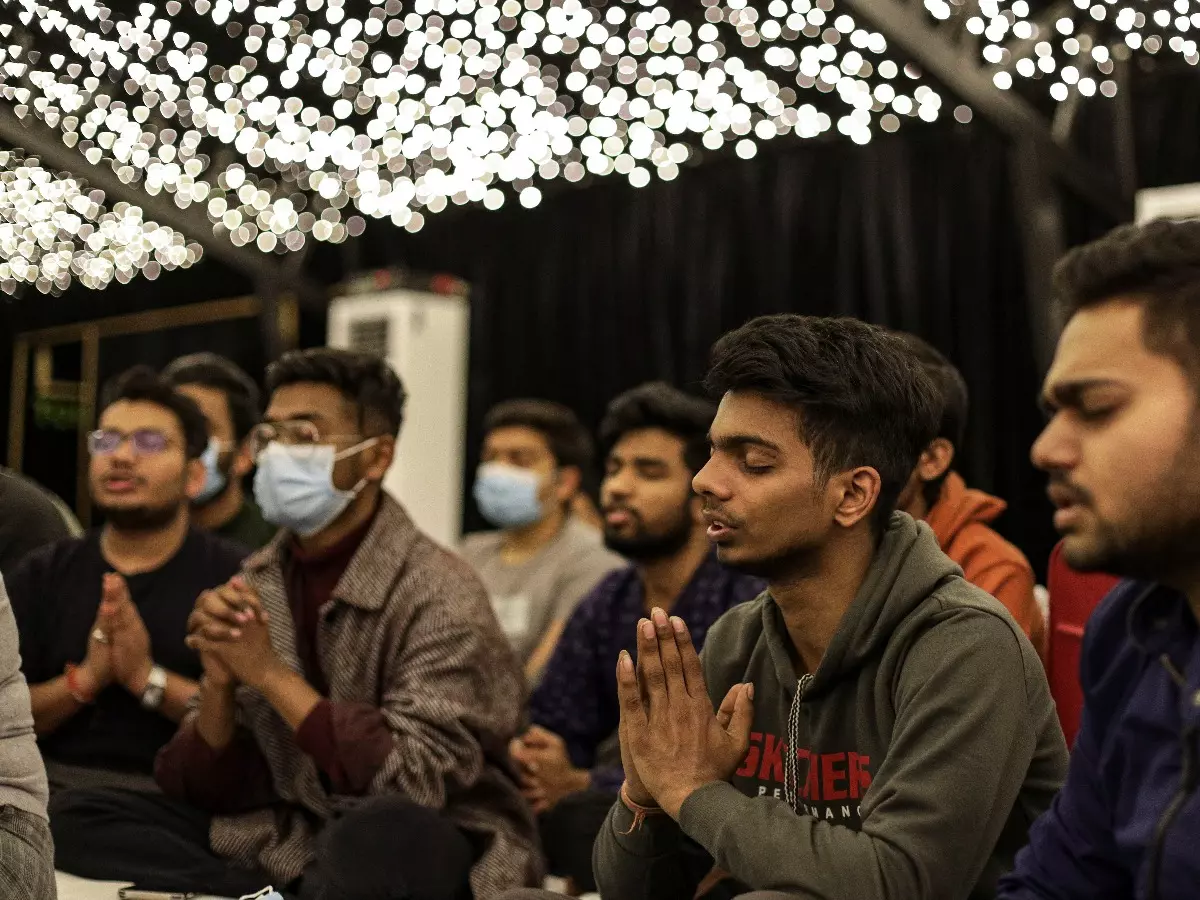Explained: Why Ukraine Remains A Preferred Education Destination Of Indian Medical Students
As fighting between Russian and Ukrainian forces escalates, around 14,000 Indians, including a significant number of students, are still estimated to be stranded in the war-torn country.

As war between Russian and Ukrainian forces escalates, around 14,000 Indians, including a significant number of students, are still estimated to be stranded in the war-torn country. However, as the first sign of approaching war loomed near to February 15, around 4,000 Indians were evacuated through Romania, and returned home.
 AFP
AFP
Even though government officials have been quoted in the media as saying that around 4000 Indian students had returned to India, the number of students who still need to be evacuated is unclear. Whilst the present is riddled with chaos and despair, let us understand what draws thousands of Indian students to Ukraine every year, what the benefits of studying in Ukraine are, and what is happening to them right now.
Foreign students in Ukraine
According to the Ministry of Education and Science of Ukraine's website, there are over 20,000 Indian nationals in Ukraine, with around 18,000 of them being students. They are the largest group of international students in Ukraine, accounting for roughly 24 percent of the country's 76,000 international students. Students are also from countries including China, Egypt, Turkmenistan, Azerbaijan, Morocco, Nigeria, Turkey, Israel, and Uzbekistan.
 AFP
AFP
According to the reports, approximately 4,000 Indians have been able to leave Ukraine since the fighting began, while 16,000 remain stranded.
Why do Indian students go for education in Ukraine?
Reports claim that the majority of Indian students in Ukraine study medicine. Ukraine has the fourth-largest number of graduate and post-graduate specialisations in the field of medicine in Europe. Some of Ukraine's state-run universities are well-known for providing high-quality education, and it is believed that Indian parents prefer to send their children to these institutions rather than pay a large fee to enroll into a lesser-known private medical college in India.
 Photo shared by students
Photo shared by students
While government medical universities are affordable to aspirants, private medical institutions charge huge fees. According to Quartz India, Ukrainian medical colleges are a boon for students who are unable to get seats at government institutes or afford the hefty prices charged by private institutions in India. The universities in Ukraine are less expensive - MBBS costs in Ukraine range from $3,500 to $5000 annually (that is Rs 2.65 lakh to Rs 3.8 lakh), which is affordable for Indian students.
In a private medical college in India, an Indian student might expect to pay anything from Rs 50 lakh to Rs 1 crore. In comparison, a student studying for a six-year medical degree in Ukraine will only need to pay a fraction of that. Along with low tuition fees, Ukraine offers various benefits such as low-cost food and housing in Ukraine.
 Reuters
Reuters
The National Medical Commission reports that there are 605 medical colleges in India, with a total of 90,825 MBBS seats available each year. While this figure appears large, it pales in comparison to the 1.6 million candidates that attempted the National Eligibility Cumulation Entrance Test (NEET) for MBBS admissions in 2021.
This situation highlights that in India, just one out of every 16 aspirants is enrolled in medical college. With such intense competition, many students are either unable to pass the exam or end up with low grades. This deprives students of getting admission to prestigious colleges, particularly those run by the government. This fact adds another reason that there are no entrance tests to pass in order to obtain admission to medical schools in Ukraine. The students only need to pass the NEET exam in India to be considered for admission to Ukrainian colleges.
But, the catch is these institutions are accredited by the World Health Organization, UNESCO as well as several other European countries. These students can also return to India to work as interns, take the NEXT qualifying test (formerly known as the Foreign Medical Graduate Examination), and practise medicine within the country.
What¡¯s their current condition?
Students in Ukraine claim that since Russia started its military operations, they have been left stranded, without any assistance. Several of them have made desperate pleas to the government to help them return safely, while others have taken refuge at metro stations, which may be used as bomb shelters.
 Reuters
Reuters
Many of them took to their social media and shared visuals from shelters like underground metro stations and basements amid airstrikes and missile attacks by Russian forces.
In the midst of this conflict, Indian Prime Minister Narendra Modi in his post-Budget Health Ministry session on February 27, urged private players to facilitate the medical education system in increasing the number of medical seats so that students do not have to leave the country to pursue medicine.
Central Government's response
The government is working to arrange evacuation flights from neighbouring nations for Indians trapped in Ukraine. Teams are en route to Ukraine's borders with Hungary and Poland in the hopes of bringing back its citizens.
31 evacuation flights would be operated to neighbouring countries of Ukraine as part of 'Operation Ganga,' to bring back Indian students stuck in Ukraine. Flights will be operated by Air India, Air India Express, SpiceJet, Indigo, and the Indian Air Force as part of the 'Operation Ganga' mission. Since March 2, a total of 21 flights have been operating from Bucharest, Romania, and four from Budapest, Hungary.Watch this video explainer:
For more on news and current affairs from around the world please visit Indiatimes News.
